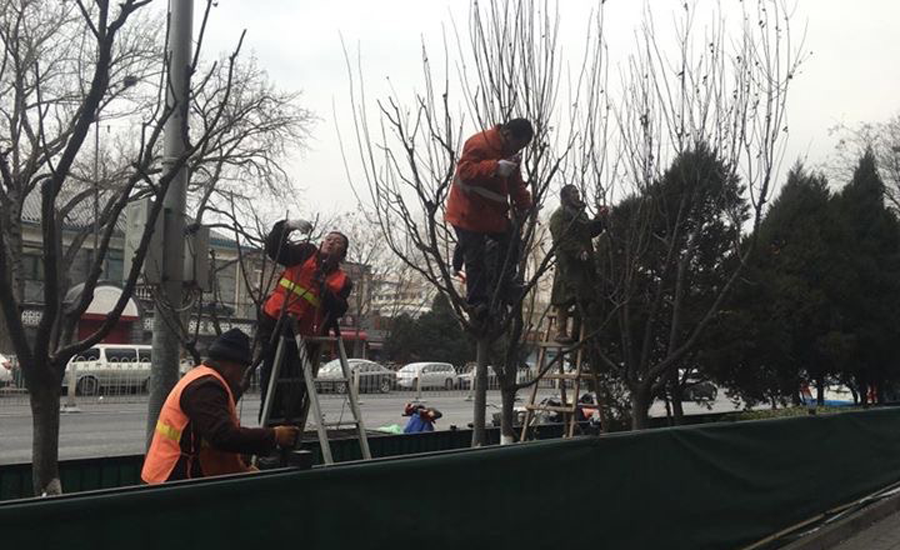Within two weeks of pledging to achieve major reductions in carbon emissions at the United Nations Conference on Climate Change in Paris in mid-December, Chinese President Xi Jinping approved a massive urban development program for his nation.
Xi presided over the Central Urban Work Conference, which promised to make cities more livable cleaner water and “green belts” containing stretches of trees that act as “lungs” in busy urban centers, in addition to cleaner air.
Public resentment over choking levels of smog has mounted in recent years and received international attention. The Air Quality Index in Beijing and other cities often hovers around 500, which is 20 times over the levels specified by the World Health Organization.
"The government will take a more sophisticated approach to its urban planning and encourage enterprises and citizens to participate in creating the cities of the future," an official release said.
During the conference, officials attempted to work out ways to implement some major city development projects under the 13th five-year plan (2016-2020.)
The idea is to enlarge China’s urbanization level from 50% to 60% by 2020. This would mean moving 100 million people from rural to urban areas by creating many smaller cities and expanding the existing ones.
An interesting feature of the plan is establishing a nationwide network of tunnels to hold pipelines for public utilities like telecommunications, electricity and water over the next five years. It would be a 1,000-km long network built across 69 cities at a total cost of $13 billion, according to the Ministry of Housing and Urban-Rural Development.
The MHURD has already obtained approval from the finance ministry for one part of the project covering 400 km of tunnels with an investment of $5.74 billion. The project will help replace overhead electricity and telecommunication lines with underground cables.
The bulk of the planned urban development will take place in three coastal province of Guangdong, Shandong and Jiangsu. The central province of Henan and Hebei, which is adjacent to Beijing, are also expected to see high paced urban growth.
“Overall it looks as if the coastal areas of China will continue to urbanize at high rates while inland regions lag a bit behind.
Although there is a wave of manufacturing moving from coastal areas to inland provinces, there still appears to be a logistical advantage being on the coast, one study by the European Intelligence Unit said.
But the problem with rapid urbanization is that it kicks off greater carbon emissions because coal-fired machines make the electricity, steel and cement that go into infrastructure construction and the daily management of cities. Xi may be further endangering air quality while trying to clean it up.
“If you are converting rural areas into cities, you may be producing more pollution. But the situation may be different if you bunch together half a dozen towns into one more efficiently run city,” Thomas Gatlev, a corporate analyst with consulting firm, Gavekal Dragonomics, told ENR.
Gatlev cited the example of high-rise buildings which make a more efficient use of energy as compared to dozens of small households burning coal for heating. Wider use of public transport networks could also help reduce emissions instead of depending on thousands of small vehicles.
But Xi is juggling with at least three balls: he wants to protect the environment, jobs and economic development at the same time. His promise of cutting carbon emissions would mean using less coal, which would turn result in job losses.
“China is in a serious dilemma. It is working hard to ensure clean environment. But it cannot afford to loose jobs and sacrifice development,” said Chen Wei Dong, senior economist at CNOOC Energy Economics Institute of the China National Offshore Oil Corporation.
Harsh reduction in carbon emissions would hit the coal, electricity and petroleum businesses, which collectively employ 20 million workers.
The recent slide in the price of crude oil and coal besides China’s falling economy has complicated the situation. Chinese leaders are now trying to boost the badly hit businesses by implementing major urban development programs, which would prove to be an economic stimulus.
But there are some who feel that China must concentrate on the long-term goal of cleaner environment instead of focusing on short term economic gain.
“China would suffer greater losses on the economic and social sectors if it does not reduce carbon emissions, and its energy intensity. This particularly applies to coal consumption, which plays a huge part in its energy dependency,” Adam Dunnett, secretary general of the European Chamber of Commerce in China, said.





